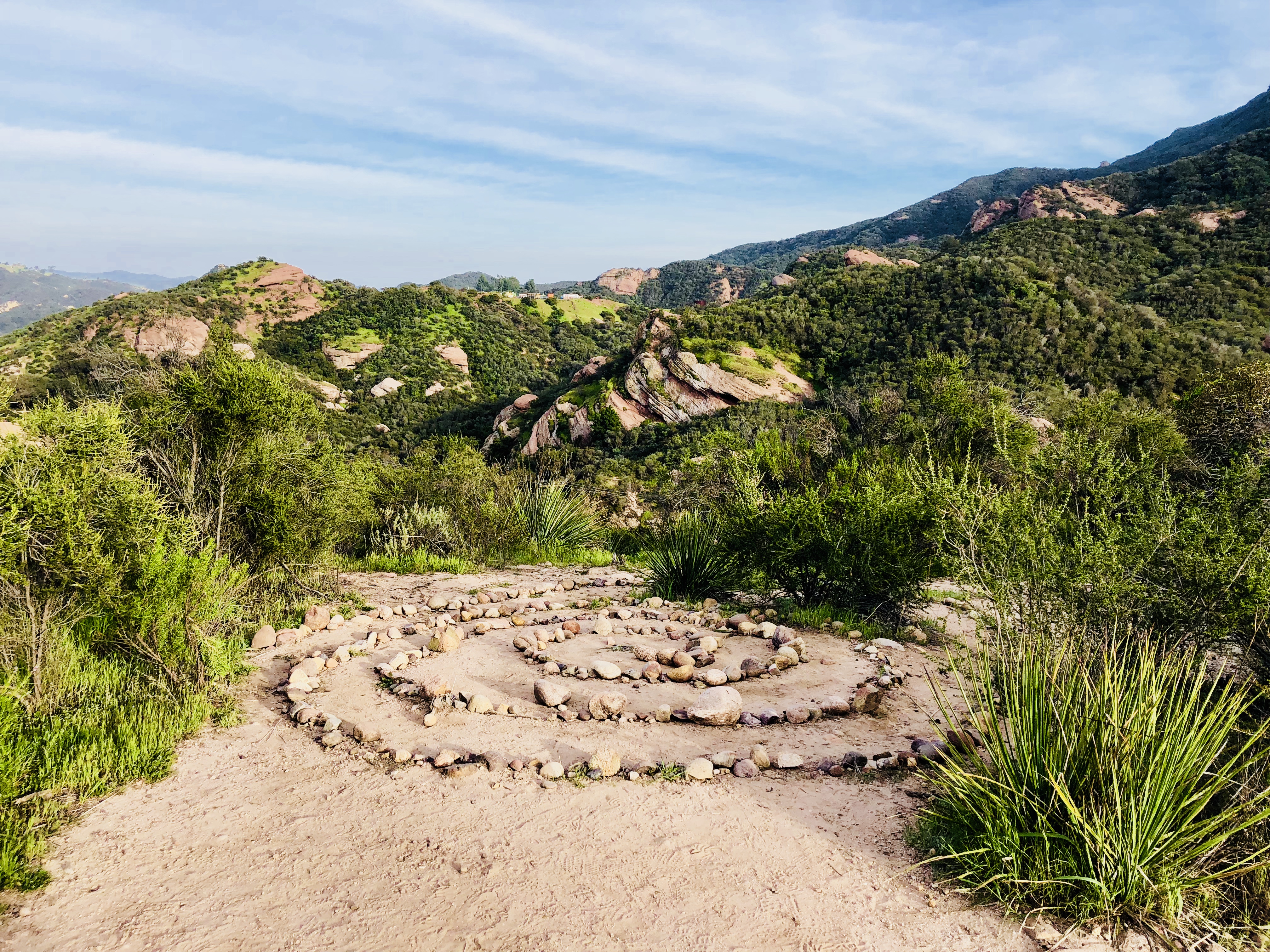
Photo by Sophie MacKenzie.
I grew up surrounded by images of young white women who were wan, helpless, and tragic. In the ‘90s, we idolized an apathetic Angela Chase in My So-Called Life, and the emaciated, dark-lidded mystery of Kate Moss and Amber Valetta. At Borders Books, I searched out copies of Reviving Ophelia, and books about why teenage girls cut themselves. I wanted to know why it was so cool to hate yourself so much.
In the greenroom of my high school’s performing arts center, I listened as my classmates, budding into teenage singularity, ruthlessly criticized every part of their bodies. Their hair was too frizzy. Their skin too pale. Their arms too fat. Their bellies too soft. I remained silent, scared to unstop what might be an endless flow of self-loathing directed at the parts of my body that felt wild, out of my control.
At night, I went to sleep under a print of Frederic Leighton’s Flaming June, imagining myself to be a pale-skinned, fleshy, near-lifeless pre-Raphaelite woman trapped inside a painting.

As we grew older, eating disorders became ubiquitous. Girls I danced with were taken out of our dance company for fear of expiring mid-plié. I was equal parts measured and afraid, kept in check on one side by my parents’ obsession with healthy eating and exercise and on the other by my classmates’ demise. Neither route felt safe, so I kept quiet and behaved. When I was fifteen, I came home from school and asked my mother if she was anorexic. She said no. We didn’t yet have a word for orthorexia (an obsession with eating healthy foods to the point that it controls your behavior).
Somewhere along the way, I imbibed the assertion that the worth of a woman’s body—to men—might be measured by its thinness. My body, always softer than the hard angles I saw in magazines, on tv, even in my own mother, felt like a betrayal.
In college, nothing changed. Friends starved themselves as a means of control or as a way to seduce cruel men. My breasts swelled. My parents suggested I lose weight in order to be happy. At twenty, in a hotel room in Paris after a morning of croissants and body shaming, I asked my parents never to talk to me about losing weight again.
They never meant to hurt me, they said. They just wanted me to be happy. They told me I was perfect exactly as I was. They’d always told me so. Even when they also said I wasn’t.
I wondered if my parents were right, if I would be happier if I lost five pounds, ten. I remembered the young couple I saw at the mall food court when I was sixteen, when I thought a woman’s body should be a flat sheet for a man to lie down upon. She was my age and round and glowing. He was slight and attentive to her every move. They were in love. I realized that not everything I’d been told about thinness and worth and love was true.
I still think about that couple, laughing in the food court, sixteen, happy just as they were. In love. Free. I wanted that.
I want that.

In my twenties, before my mother’s body betrayed her with cancer, I immersed myself in sacred body practice. Yoga, meditation, and tantric Buddhist philosophy made real the idea that my body was something precious, a gift to be taken care of, to cherish, to anoint with oils and revere in all its forms. From the time I was young, my mother had also taught me to experience my body as a part of the natural world. When I was ill, she would lay her hands on me, practicing her own form of reiki that involved summoning the “healing powers of the universe”. Even through her criticism, I knew she saw my body as sacred.
As a yoga teacher for almost a decade, I got deep in the metaphysical study of healing my body. I studied chakras and mantras and every kind of meditation you can imagine. I contorted my body into upside down pretzels and filled my cells with sacred sounds. I preached—and subscribed to—the belief that the flexibility and strength of my body were a barometer of my spiritual worth, even though deep down, I didn’t quite buy it. Though my yoga asana practice ultimately hurt my back, the tantric philosophies of sacredness and emptiness remained long after the physical practice left me.
From that point forward—and as I watched my mother’s body fall apart and pass away—I understood that my body, every cell, every angle, every concave or convex, was empty of meaning except for that which I gave it. The knobs of my congenital bunions were not inherently ugly or strange aside from the meaning I chose to assign to them. My prominent nose was only as unseemly as I decided it was. My body was only wrong in the ways I decided to make it wrong.

Before we go any further, let’s break down those two terms: emptiness and sacredness.
Emptiness: Having the quality of being empty of inherent meaning, translated from the Sanskrit word sunyata. In tantric Buddhist lineages, emptiness also refers to a state of mind unperturbed by the incessant change that defines life as a human.
Sacredness: Having the quality of being worthy of awe, care, respect, and devotion.
Now that we’ve established these, I want to share with you the steps by which I practice what I’ll call Sacred Body Practice in my life.
SACRED BODY PRACTICE
- Identify the parts of your body that you spend time tearing down, picking apart, or sustaining negative thought patterns about.
- Write down that negative inner or outer dialogue.
- Now write down who it is that’s saying those words—is it the voice of your mother, your father, the mean girls in middle school, the boys who used to tease you, your boss, Angelina Jolie, your twelve year old self, or someone on Instagram you’ve never even met? Who is it? Identify the voice.
- Thank that voice for its opinion, and kindly ask it to leave. Forever. Let it know it no longer has a place or a function in your life, your mind, or your body. Congratulations: You’ve just acknowledged the inherent emptiness of material phenomena.
- Reclaim the inherent emptiness and sacredness of that (or every) part of your body. I do this in three ways:
- LAVISH my body with love and attention, especially when I feel unworthy:
- Massage on body oil after a shower.
- Take time to slow down, breathe, and feel my heart beat.
- Rest with my hands on my heart and my belly, beaming love into every cell of my body.
- Speak kind and loving words to yourself, internally, out loud, or both. I like to look myself square in the face in front of a mirror and say, “I love you, exactly the way you are.”
- Make everything you do an act of sensual pleasure—cutting a melon, feel its coolness and scent; typing a report, feel the weight and power of your body; stepping outside, feel the cool air soft on your skin.
- GO OUTSIDE and experience my body in connection with the magnificence of nature:
- Remember that you are an animal, a glorious beast bred to experience the wonder of the earth. Let your body relax in the wisdom of its wildness.
- Look at the sky, get yourself in green, feel the soil beneath your feet, or touch water. Breathe. Feel your mind and body expand to take in the entirety of sky emptiness, green vibrance, earth strength, water flow. Feel your cells expand as they relax.
- COURSE CORRECT with clear action when old inner dialogue resurrects:
- Stop reading, looking at, or watching any media that triggers negative thought patterns about your body. This includes media that portrays violence to women’s bodies in any way. (Yes: That means I don’t watch many popular mainstream tv shows, and my mind is much happier for it.)
- Stop having conversations that diminish any part of your body or theirs with friends, colleagues, family members, or strangers. Literally stop. A friendly but firm request should do the trick.
- Stop tolerating the repetition of these negative thought patterns in yourself. If they persist, seek support from a therapeutic professional.
- LAVISH my body with love and attention, especially when I feel unworthy:
Welcome to your sacred body. Isn’t it beautiful?



